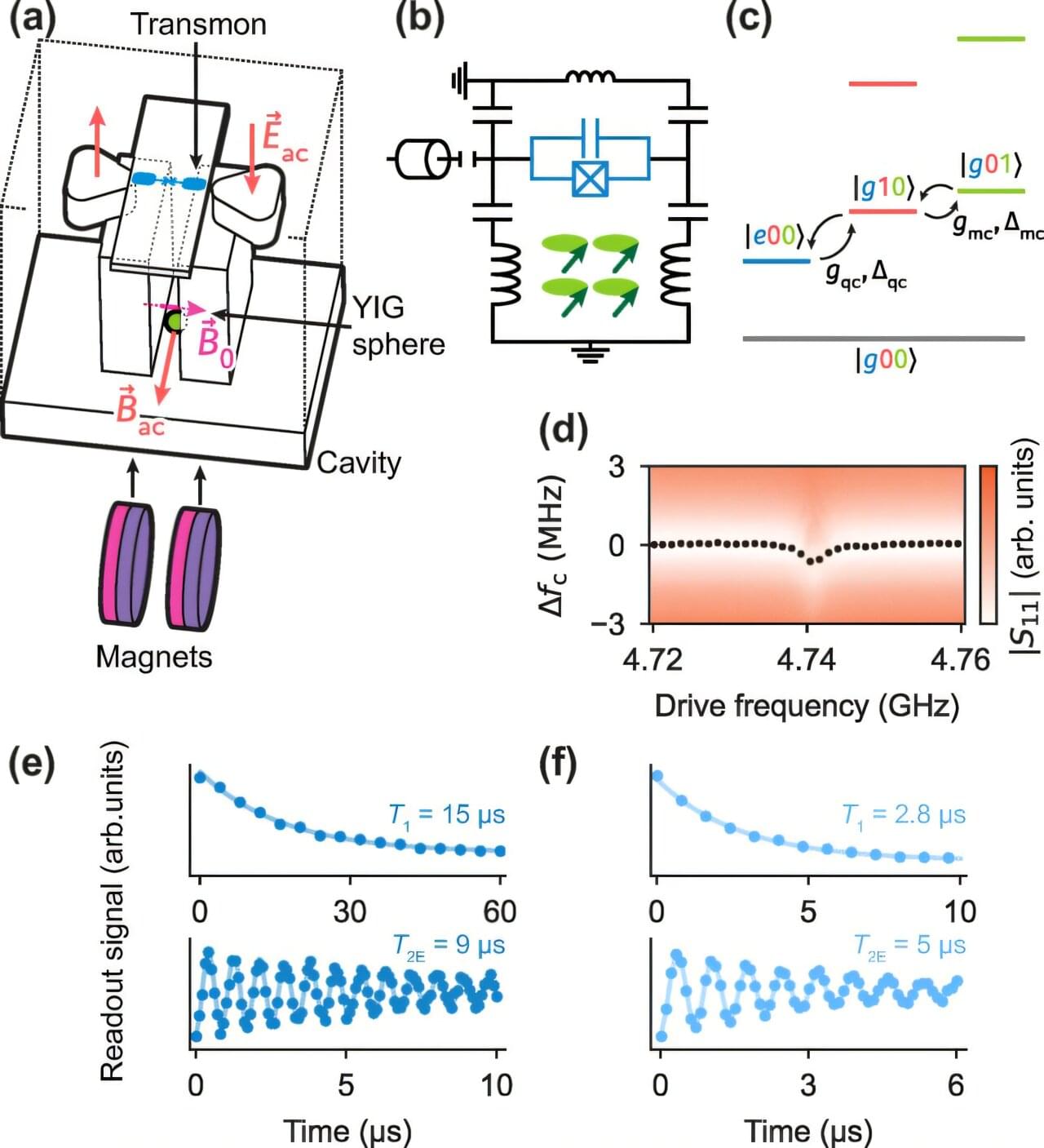Devices taking advantage of the collective quantum behavior of spin excitations in magnetic materials—known as magnons—have the potential to improve quantum computing devices. However, using magnons in quantum devices requires an in-depth understanding of their nature and limitations. A new experimental technique uses superconducting qubits to sensitively characterize magnon behavior in previously unexplored regimes.
Researchers in the Grainger College of Engineering at the University of Illinois Urbana-Champaign have reported in the journal Physical Review Applied that highly excited magnon behavior in ferromagnetic materials can be accurately characterized by coupling the material to a superconducting qubit via a microwave cavity. This setup allowed the researchers to characterize both the number of magnons and their lifetimes when thousands of excitations are present, a regime that has not been studied well.
“To be useful in quantum computing applications, limitations on magnon systems need to be understood properly,” said Sonia Rani, the study’s lead author. “The problem is that there isn’t a good theory for when certain effects become important, and if we should expect them to lead to detrimental effects.








